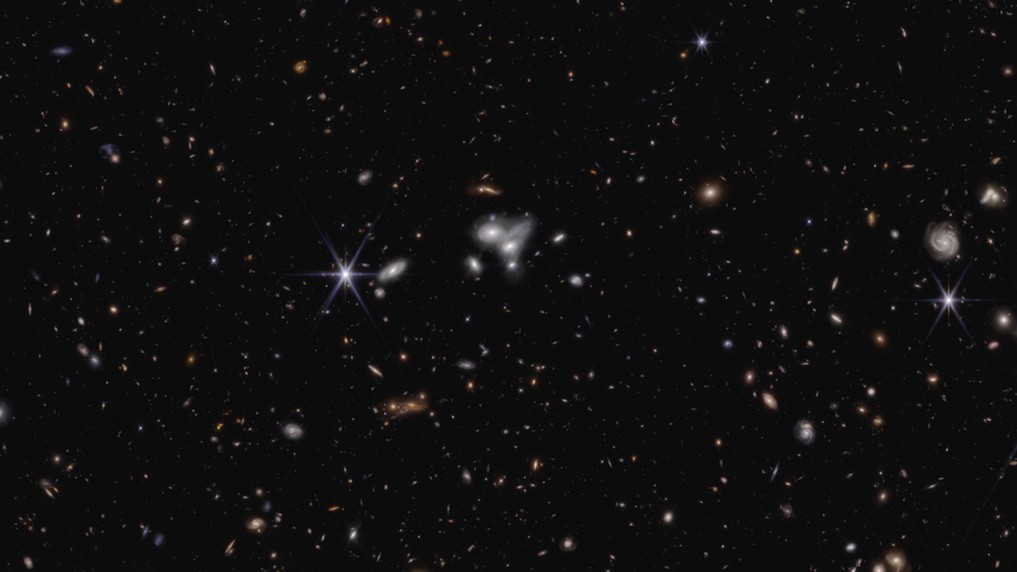
Astronomers using the James Webb Space Telescope (JWST) have detected the most distant, actively-feeding supermassive black hole ever observed. The black hole also happens to be one of the least massive seen in the early universe — measuring the equivalent of about 9 million suns — which is proving challenging to explain.
Researchers observed the galaxy hosting this active supermassive black hole as part of the Cosmic Evolution Early Release Science (CEERS) Survey. Designated CEERS 1019, the galaxy is seen as it was when the 13.8 billion-year-old universe was just around 570 million years old.
The team, led by University of Texas at Austin astronomer Steven Finkelstein, also spotted two other black holes that existed 1 and 1.1 billion years after the Big Bang, as well as 11 galaxies that existed between 470 million and 675 million years into cosmic history.
"Until now, research about objects in the early universe was largely theoretical," Finkelstein said in a statement. "With Webb, not only can we see black holes and galaxies at extreme distances, we can now start to accurately measure them. That's the tremendous power of this telescope."
Related: Gargantuan black hole 'switches on,' becoming one of the brightest objects ever seen
The team's results, which represent the first findings from CEERS, were published in May in several papers in a special edition of the Astrophysical Journal Letters.
A greedy little black hole
The black hole at the heart of CEERS 1019 is around 9 million solar masses. This may sound tremendously massive, but many supermassive black holes can grow to have billions of times the mass of our star. Yet, even at this relatively diminutive size, the existence of black holes of such masses in the early universe is still a puzzle for scientists.
This is because the processes by which supermassive black holes grow, either by mergers between successively larger black holes or by greedily feasting on surrounding matter, should take longer than the 570 million years this black hole had to work with. This means that even black holes on a scale of that at the heart of the Milky Way, which has around 4.5 million times the mass of the sun, should only be seen in the relatively close, and thus more recent, universe.
Related: What’s the biggest black hole in the universe?
"Looking at this distant object with this telescope is a lot like looking at data from black holes that exist in galaxies near our own," study co-author Rebecca Larson, a University of Texas at Austin doctoral student, said in the statement.
Scientists have long suspected that such supermassive black holes existed in the early universe, but it is only since the JWST opened its infrared eye to the cosmos in mid-2022 that definite proof has emerged.
Light emissions reveal that black hole CEERS 1019 is actively feeding on matter around it. Feeding black holes like this one are surrounded by swirls of infalling gas and dust known as accretion disks. Not only does the gravitational influence of the black hole heat this matter, causing the disk to glow brightly, but powerful magnetic fields channel matter to the poles of the black hole, where it is occasionally blasted out in twin jets moving at near light-speed, generating intensely bright light.
Further observing the black hole’s intense radiation could reveal how quickly its host galaxy is growing, and possibly shed insights on its mysterious past.
"A galaxy merger could be partly responsible for fueling the activity in this galaxy's black hole, and that could also lead to increased star formation," study co-author Jeyhan Kartaltepe, a CEERS team member and associate professor of astronomy at the Rochester Institute of Technology in New York, said.







